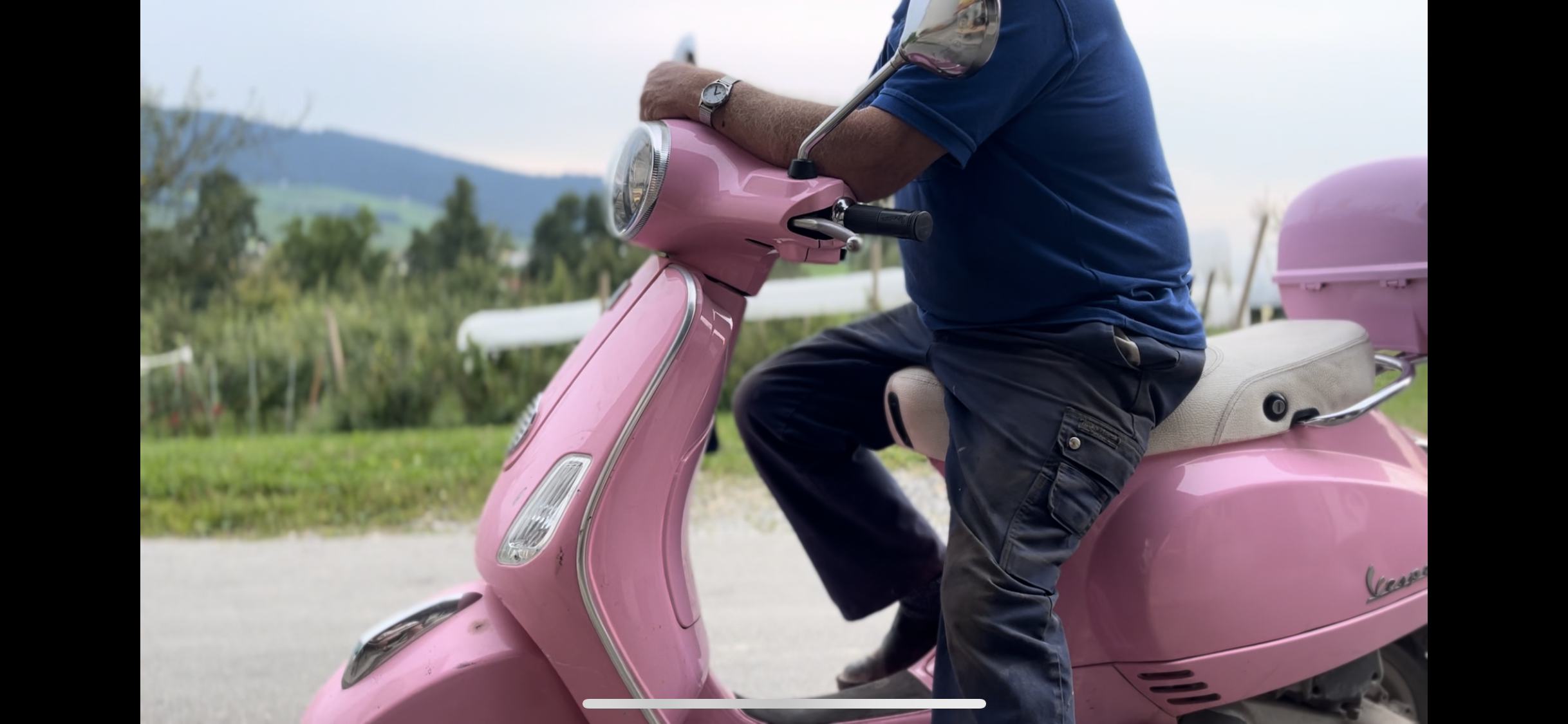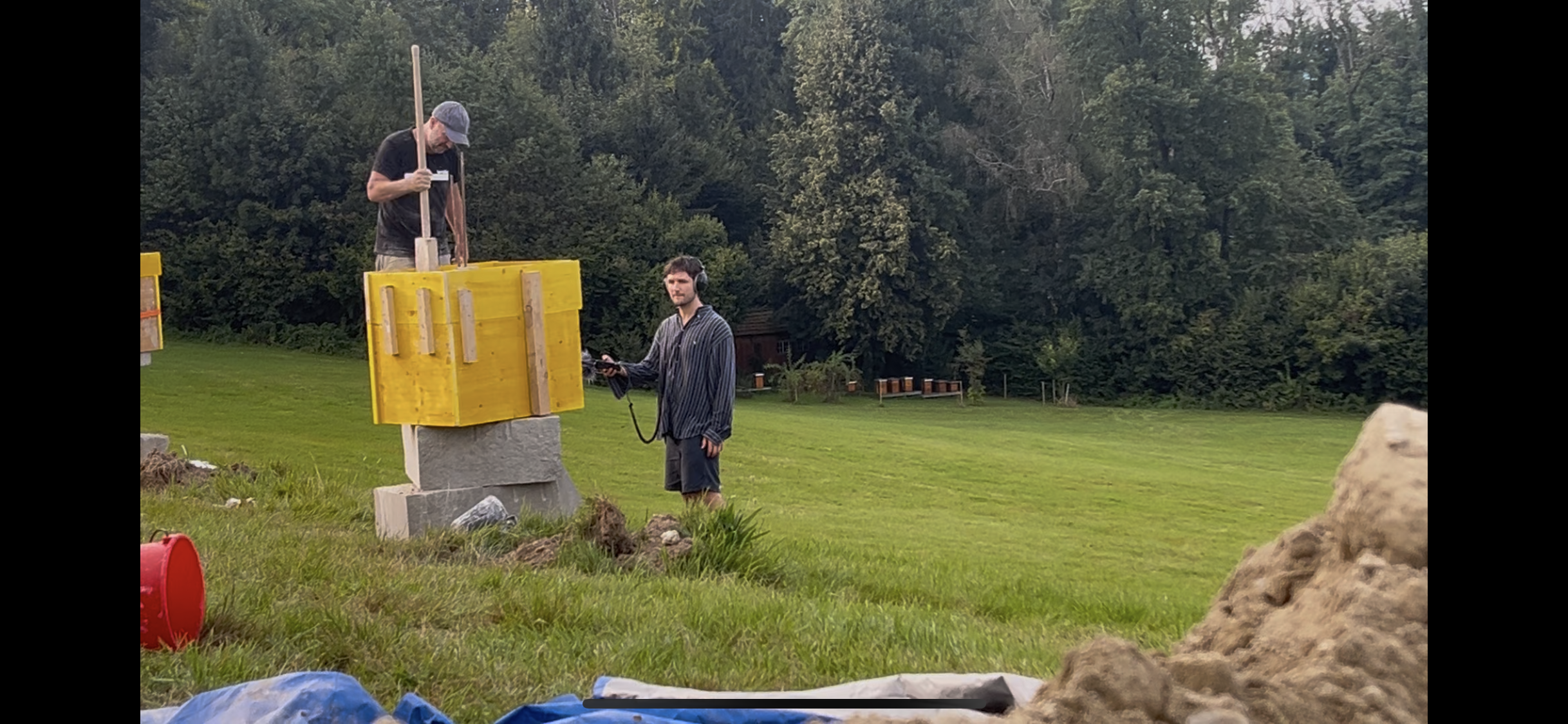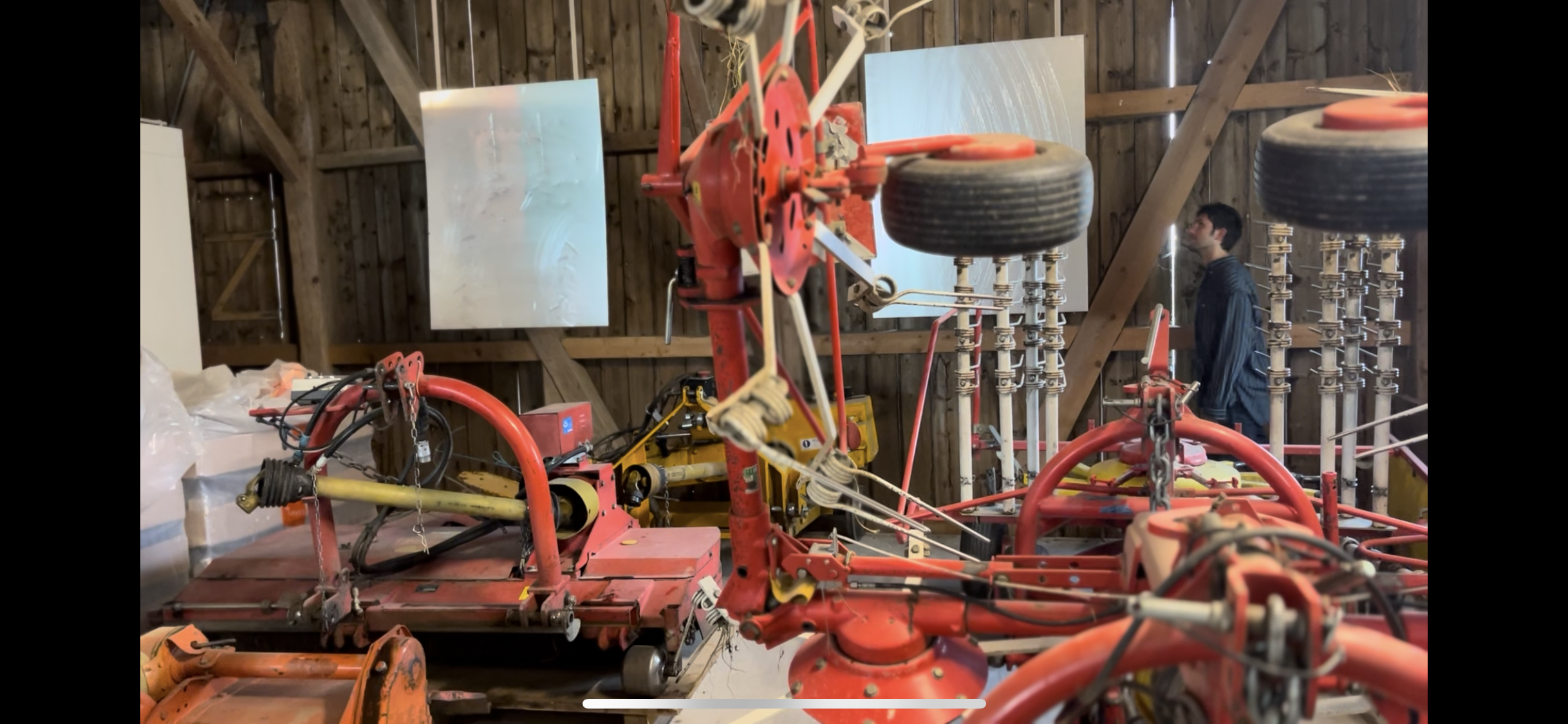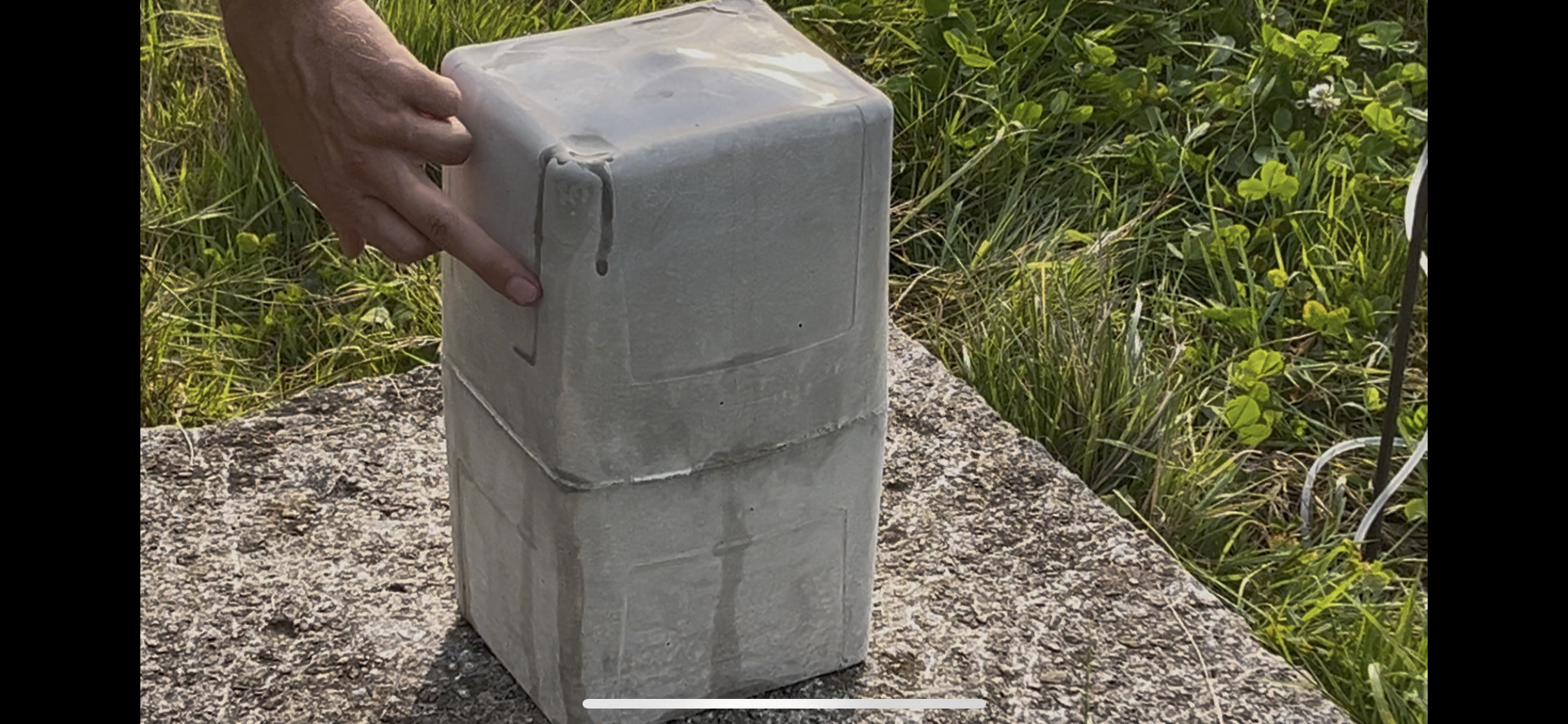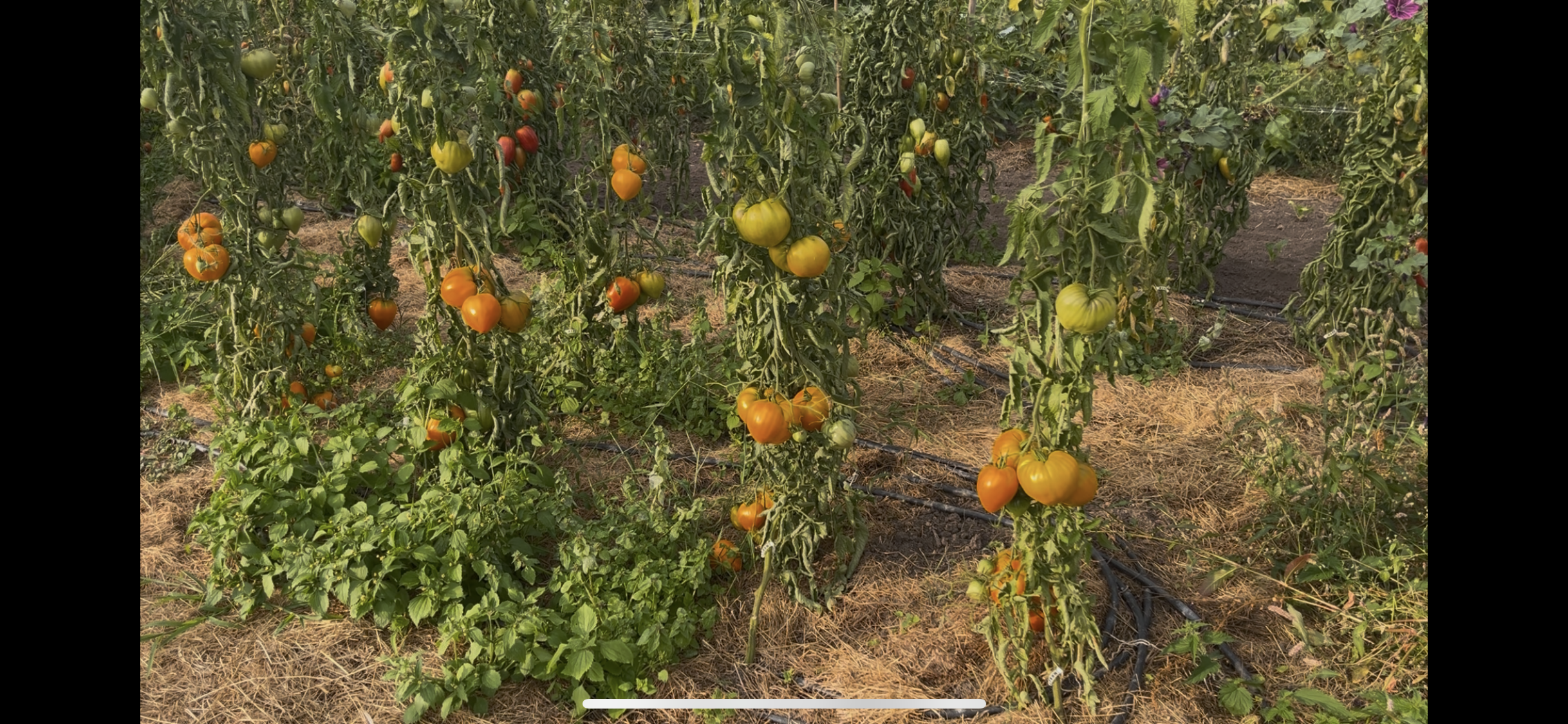The Fields of Samstagern
Jay Huber und Scott Otter
Before the exhibition had even opened, we went together to Samstagern, to Hof Blum, for a preview tour of the show with the curators. Under a sky of shifting clouds and with barely charged batteries, we set out on our way.
When we arrived, we first had to rest — to gather some strength for the grand staging of culture and art that awaited us.
I first got lost, wandering down a field path toward a rhythmic thudding sound that drifted to me from afar. Soon I saw that work was underway — sculptures made from rammed earth. They were still wrapped in the familiar yellow of concrete formwork panels, radiating a kind of wild construction-site romanticism.
At the same time, Scott Otter had been taken over by huge Zibelemärit-braids, which were hanging in a barn near the farm, waiting to be revealed to the public. I strolled back to the courtyard, and we were introduced by the curators to Hunter Long. Hunter had made concrete casts of the insides of plaster buckets, which still shone untouched in the sunlight. Soon, however, hydrochloric acid would begin to drip down onto the blocks, slowly but steadily dissolving the lime contained in the concrete. Cool.
Just behind the concrete blocks, tomatoes and eggplants were flourishing so vigorously that one might have thought they’d wandered into Italy. Right behind Italy, though, someone from Glasgow was at work, attaching contact microphones to the compost pile — amplifying the sounds of earthworms turning food scraps into humus, giving their chewing labor its due attention.
Already tired from so many intriguing impressions, we went back to the courtyard, where a cat declared its love for me by curling itself around my legs. The curators had to leave for Zurich, and we stayed behind — we had originally planned to sleep on site and shoot a horror film in the dark of night. It didn’t come to that — thankfully, I think, looking back.
There was no horror after all, but the friendly and cheerfully buzzing neighboring farmer, riding his pink Vespa, softened our farewell. A few kind words, and then we walked down to the lake, hoping to get some fried fish at the youth hostel. Unfortunately, it was five to eight — the kitchen closed at eight. So there were no crispy fish for us, only potato salad.
On the way home, the light was fading, and we tried our best to remember all the things we wanted to include in our report. On the radio, The Girl from Ipanema was playing as we rolled toward Basel.
More information — including the text below, a list of the participating artists, and the full exhibition program — can be found on the website frohussicht.ch
The multi-year project Expanded Fields connects art, agriculture, and ecological practice. On the organic farm Froh Ussicht, landscape is no longer understood as a backdrop, but as an active field for aesthetic and social transformation. Inspired by Rosalind Krauss’s famous essay “Sculpture in the Expanded Field,” the project shifts boundaries—between disciplines, species, and possibilities for action.
Artists and researchers work together on concrete questions: How can we shape a viable coexistence between humans, animals, and plants? What ecological and social models can counter the climate crisis, resource inequality, and the loss of biodiversity? Topics such as circular economies, food justice, repair culture, and new care relationships are all part of the discussion.
Expanded Fields sees itself as a laboratory for sustainable futures—a place where art initiates tangible change, forges alliances, and makes alternative ways of living visible. The fields become spaces of resonance for collective negotiation processes and new narratives of coexistence.
